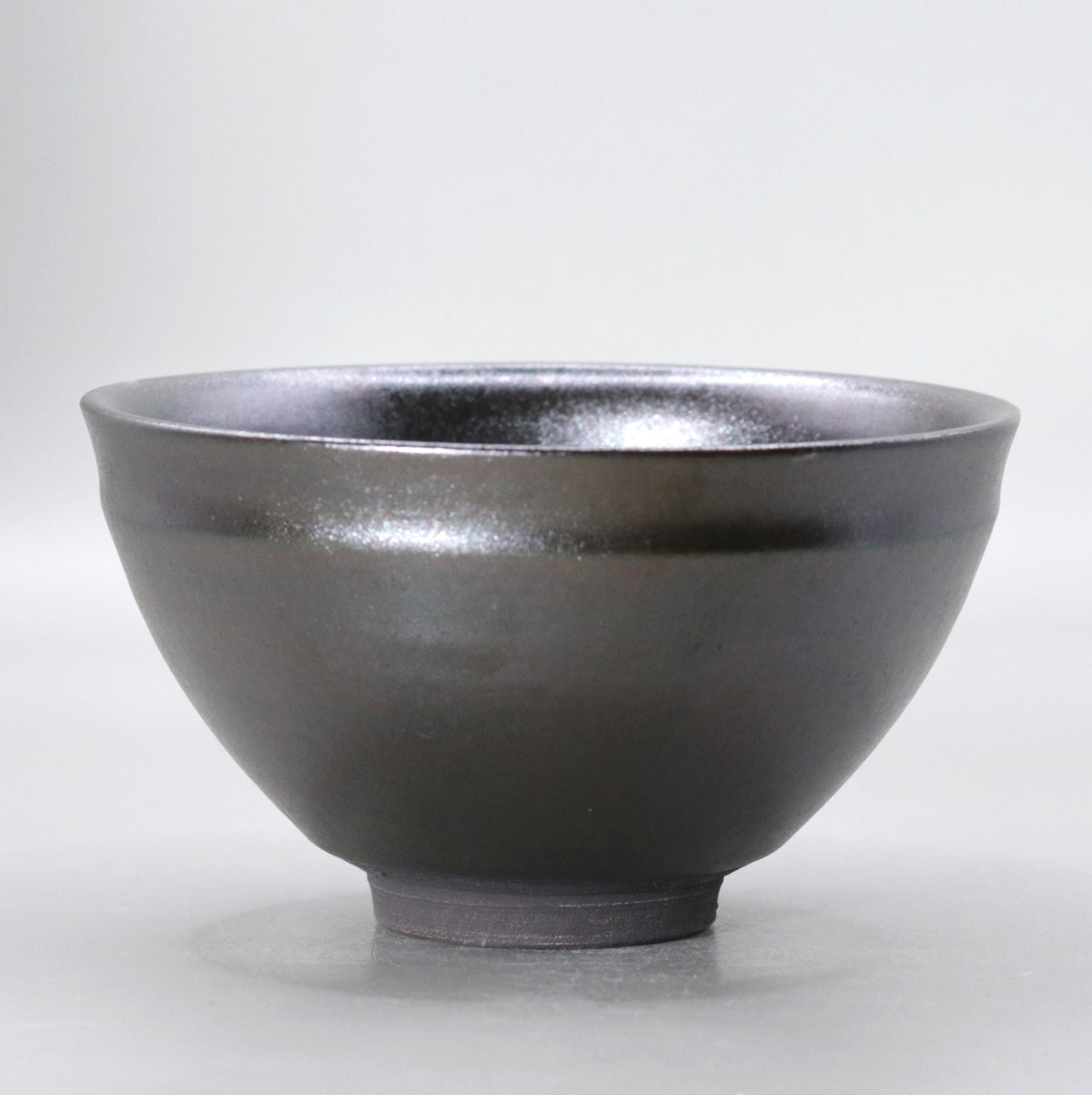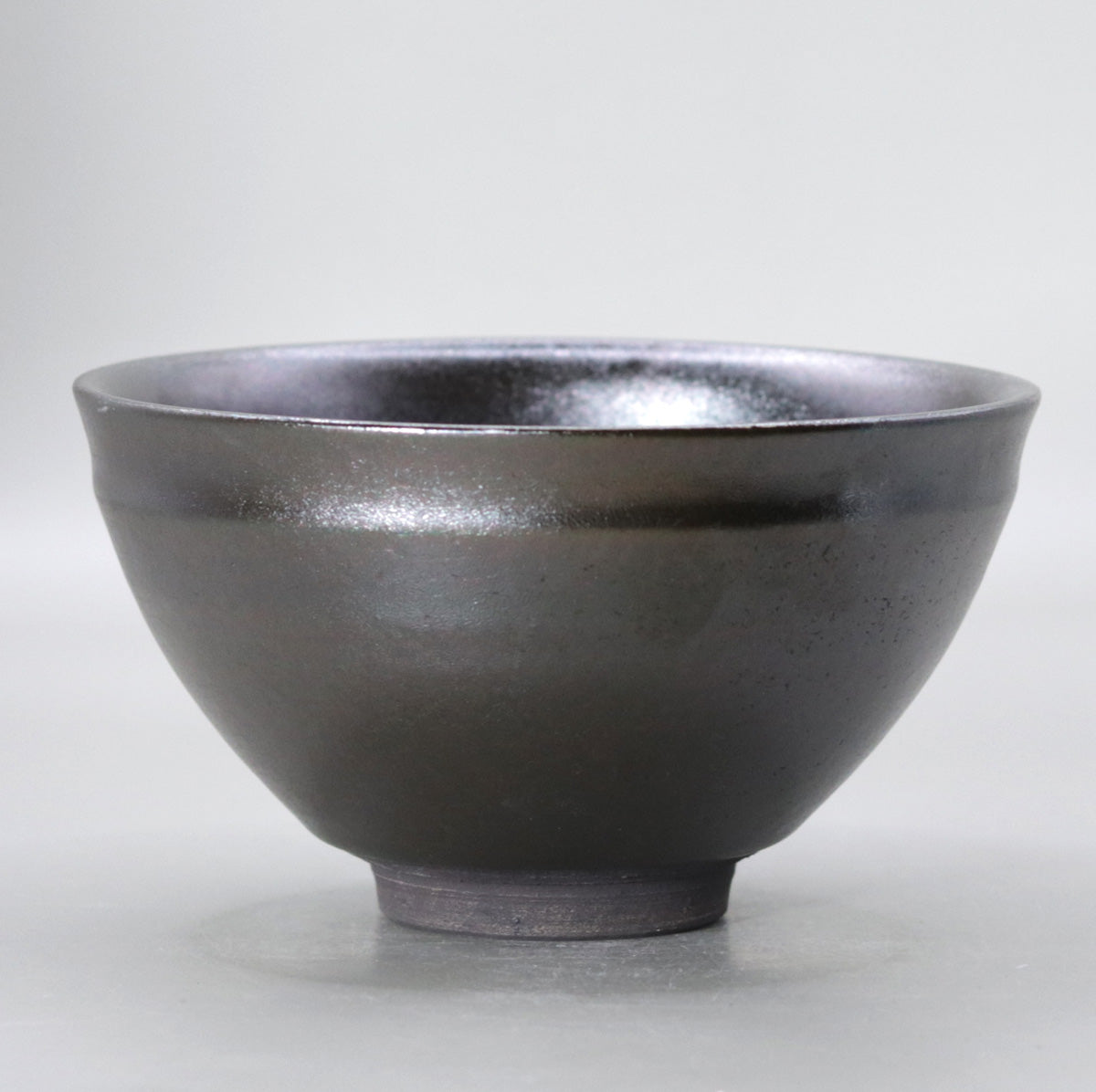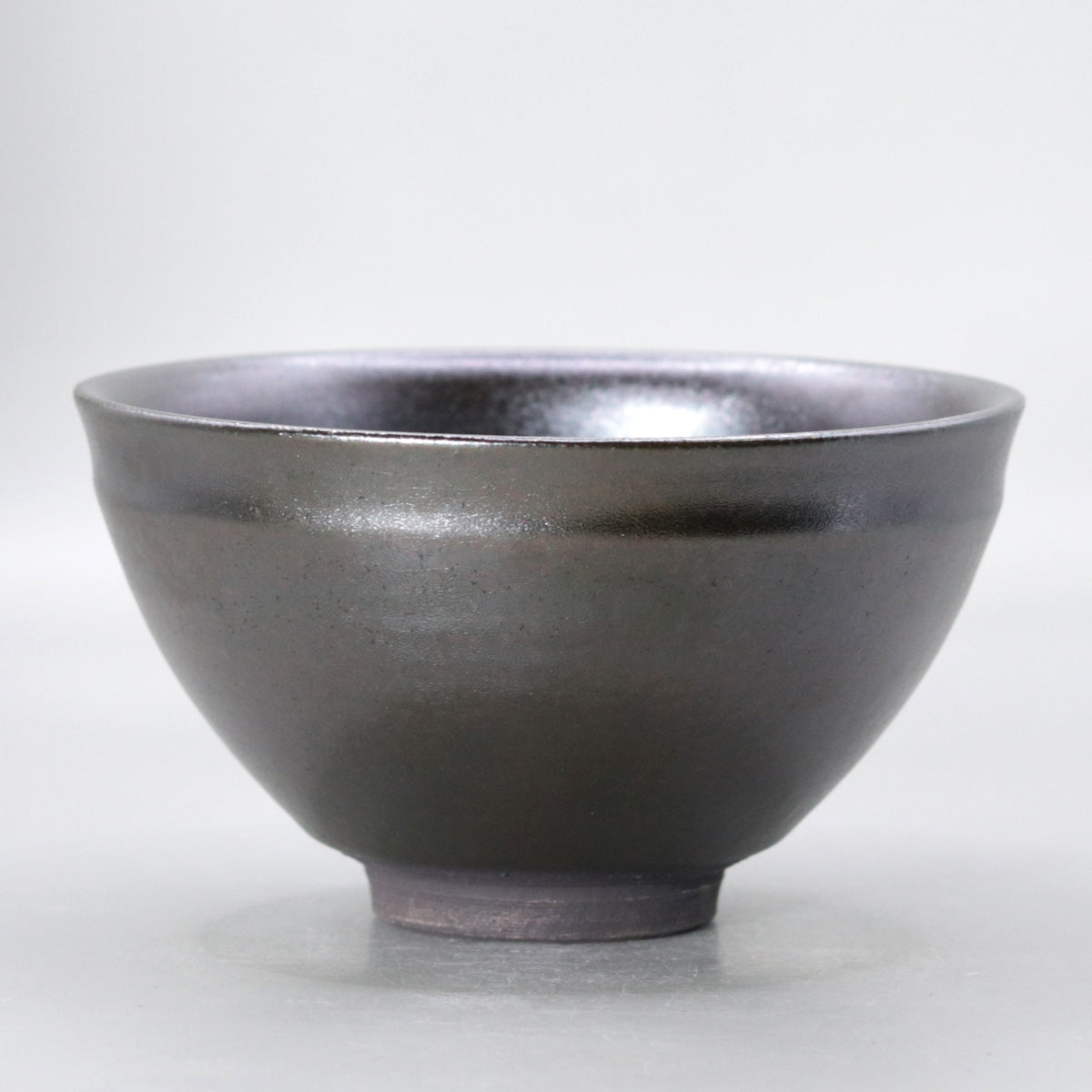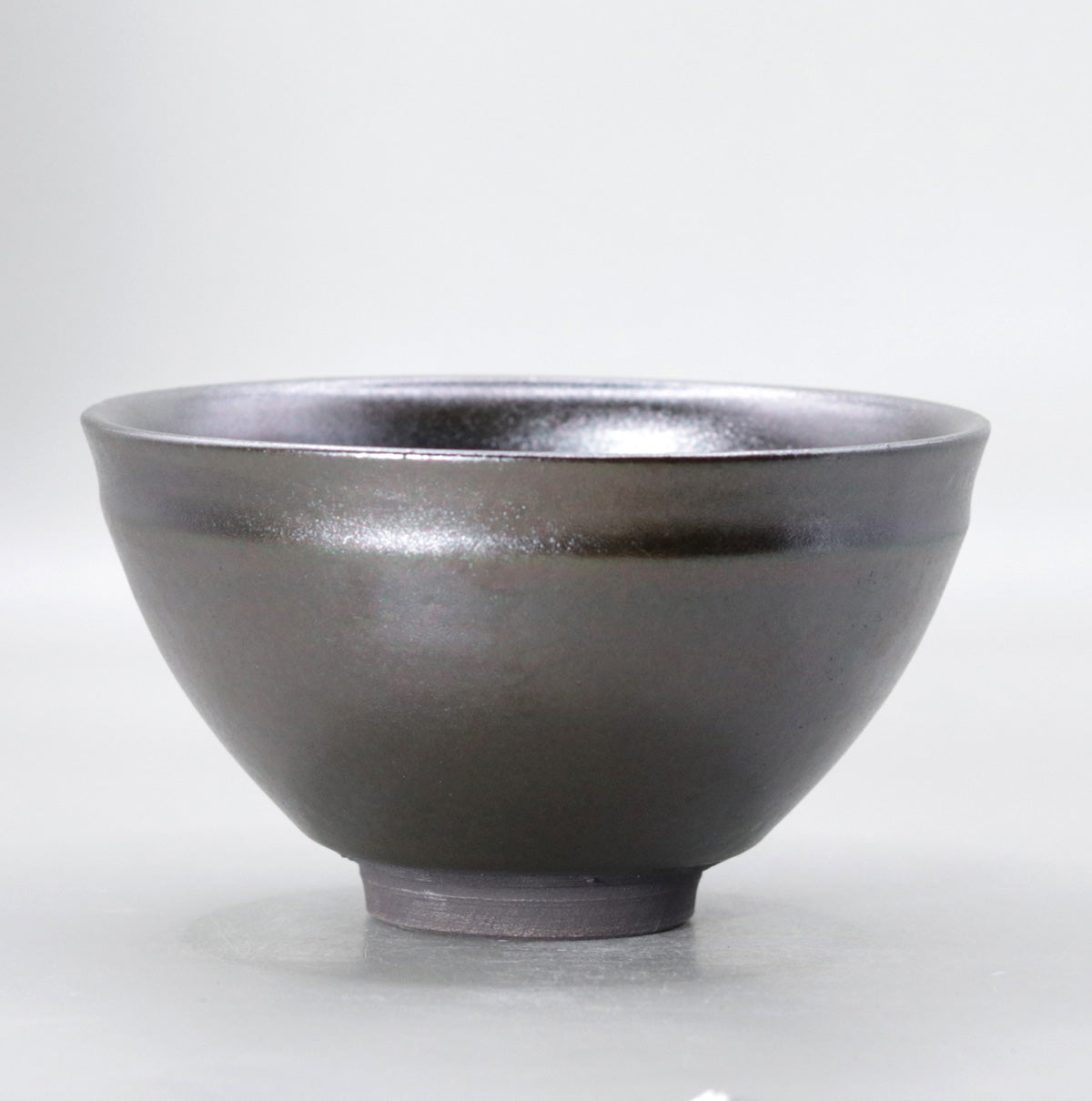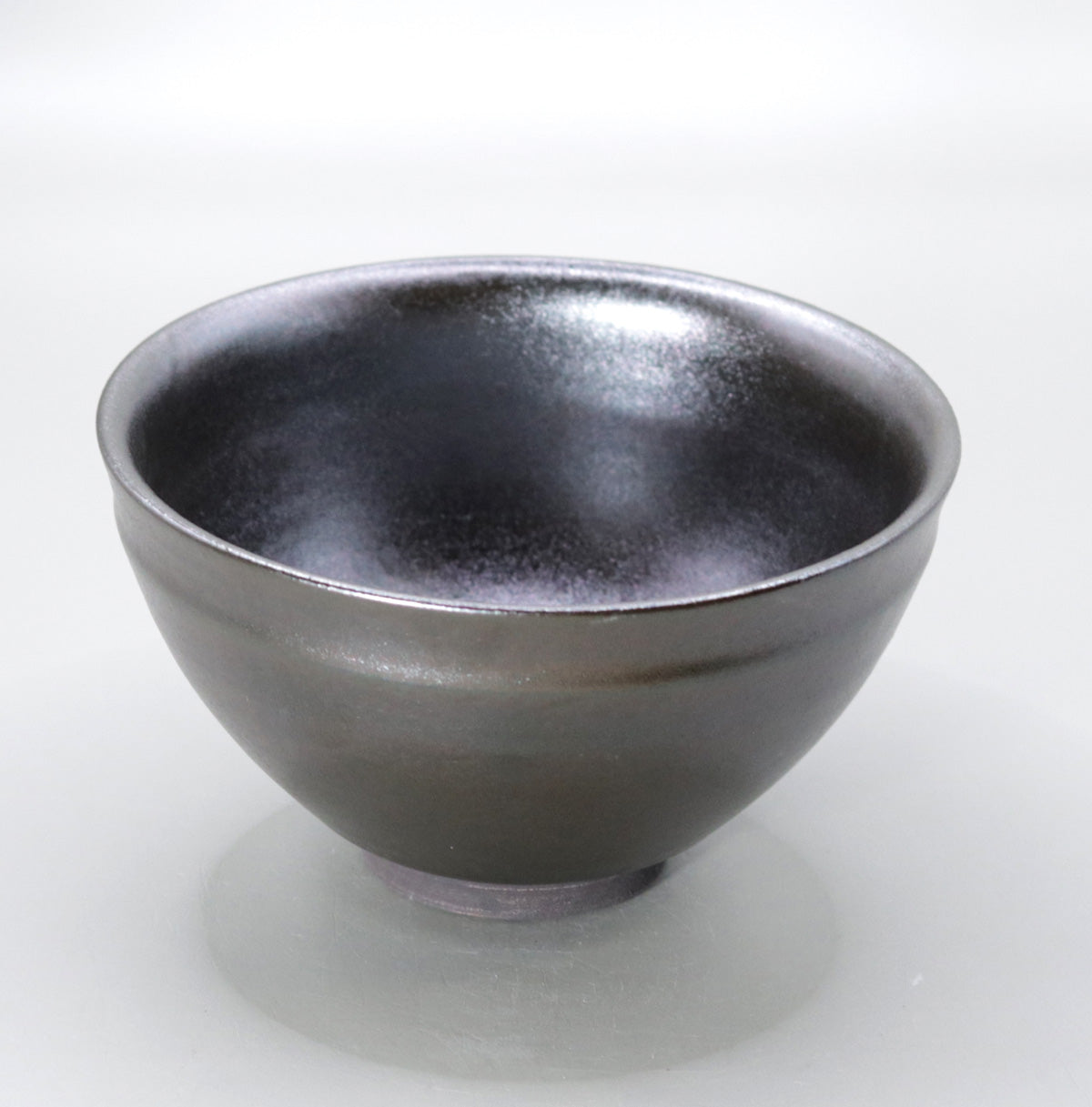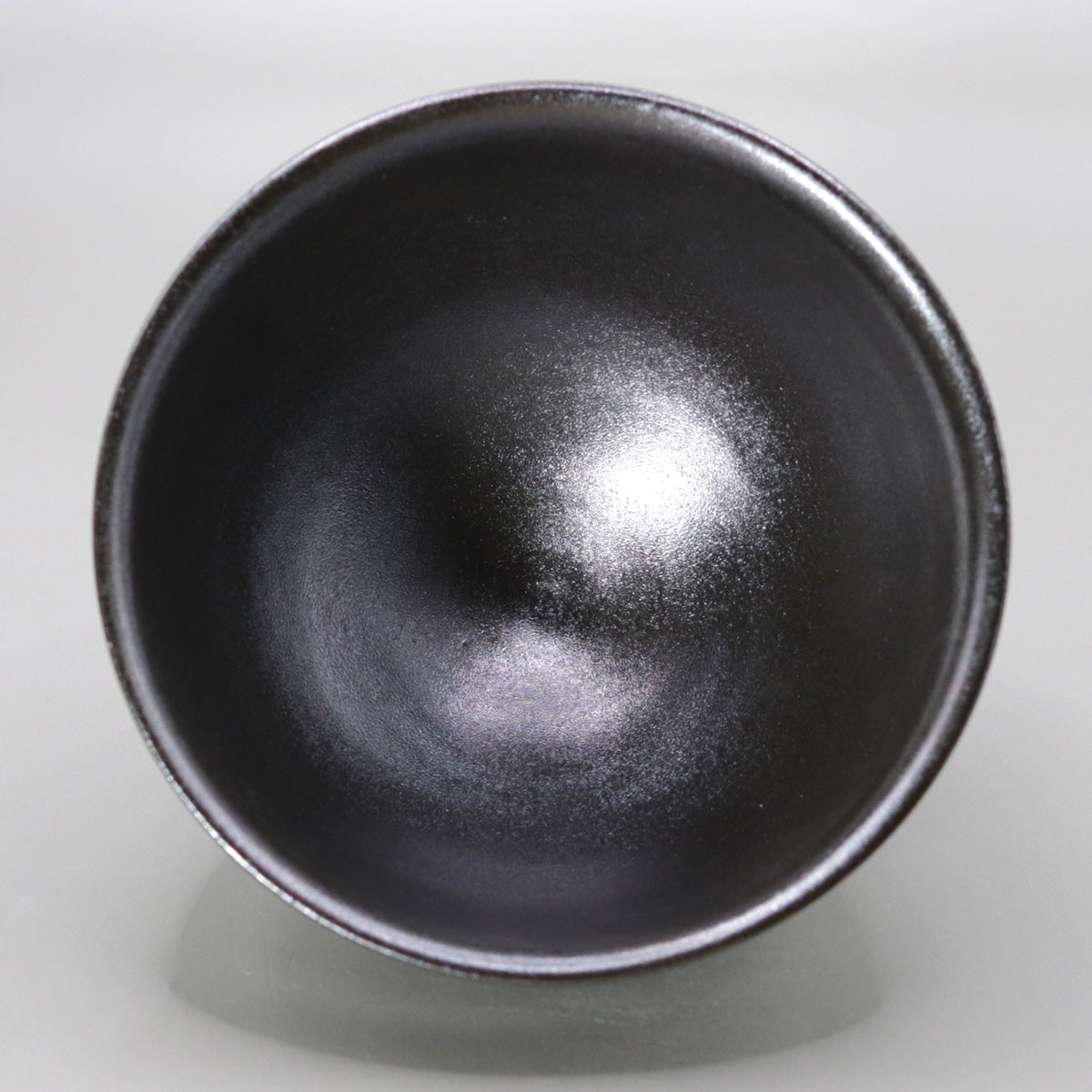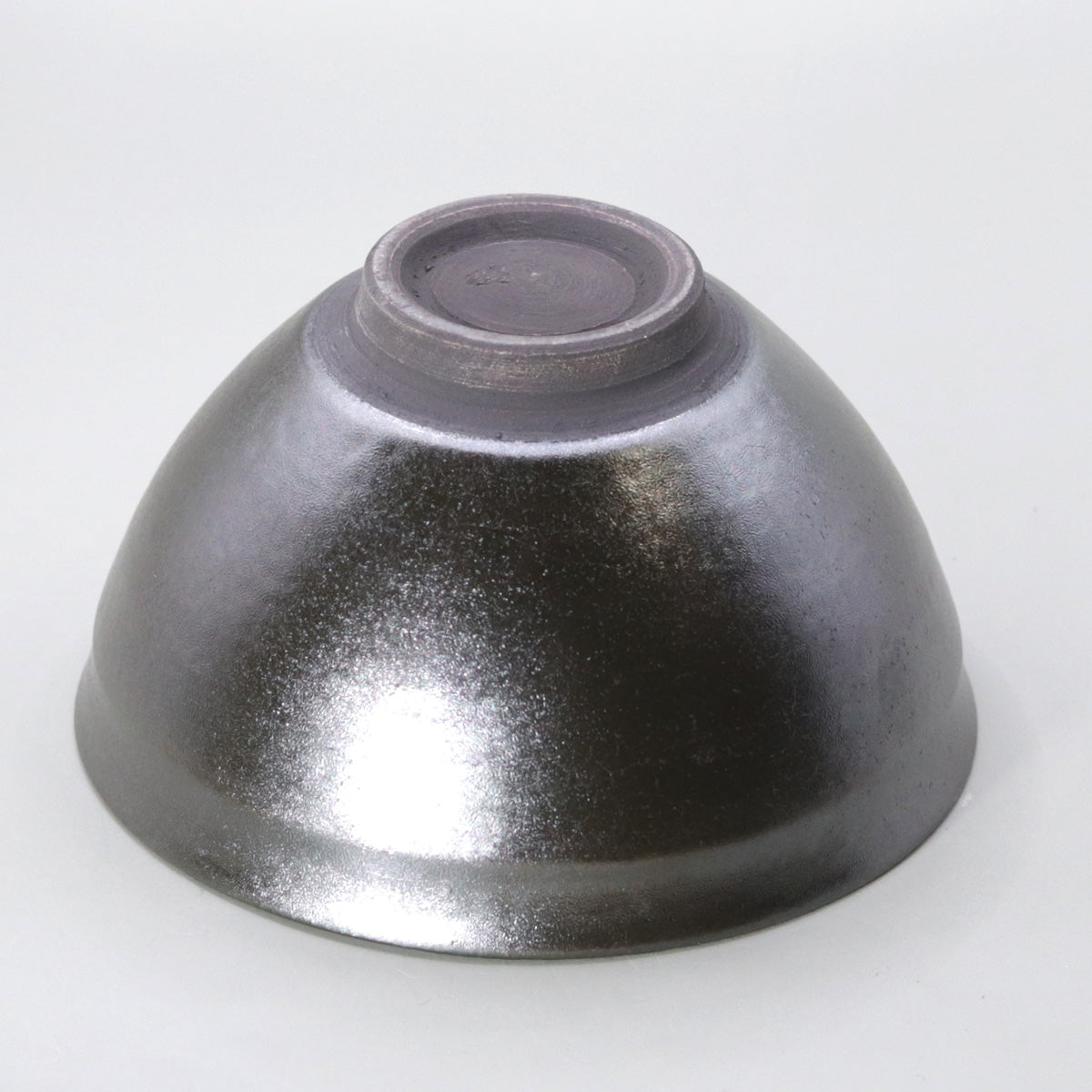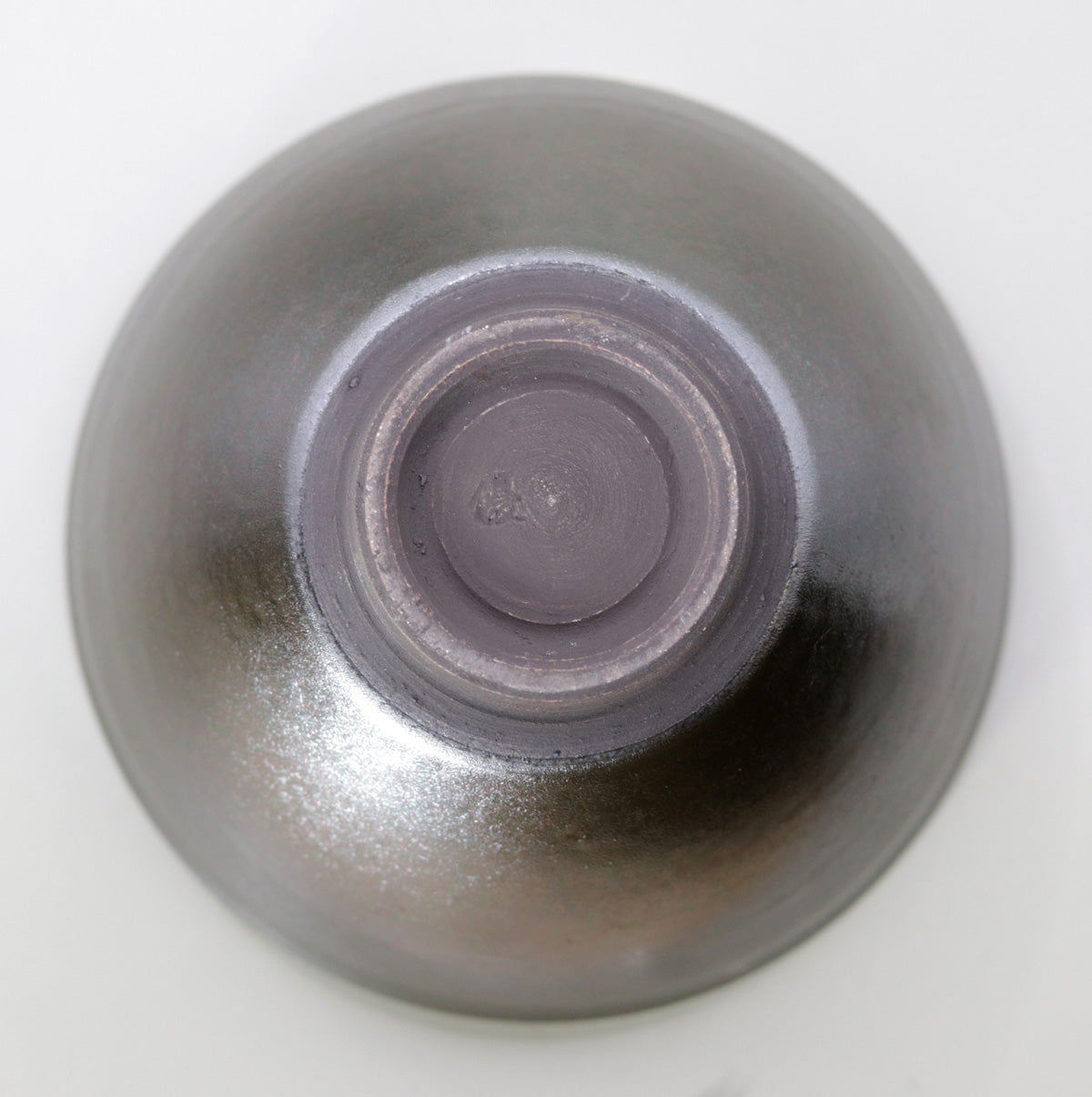Iron glaze kiln-transformed tea bowl (Tenmoku style) by Okada Yu
Iron glaze kiln-transformed tea bowl (Tenmoku style) by Okada Yu
Couldn't load pickup availability
Width: 13.5cm Height: 7.5cm
Iron-glazed kiln-transformed tea bowl (Tenmoku style) by Okada Masaru - "The moonlight blends into the silent black lake surface, and the eternal history floats."
1. The historical background of Tenmoku tea bowls -- What is "Tenmoku"?
Tenmoku tea bowls (Tenmoku bowls) originated from black-glazed tea bowls used at temples associated with the sacred mountain "Tenmoku Mountain" in Zhejiang Province, China. During the Song Dynasty (10th to 13th centuries), black glazes containing a lot of iron were prized as vessels that accentuated the color of white tea, and were actively fired in various places, including Jian kilns and Jizhou kilns. The anecdote about Jianzhan (Jianzhan) recorded by the Northern Song scholar Tao Gu in "Qingiroku" is considered to be the oldest document, and the colorful scenery created by the kiln change phenomenon, such as Yohen, oil drops, Kame (arrow eyes), and leaves, fascinated tea masters.
During the Kamakura period, Zen monks brought these back to Japan along with the culture of drinking tea, and the name "Tenmoku bowl" became established. In particular, Tenmoku bowls with cylindrical shapes and narrow mouths have excellent heat retention properties, and were highly valued in high-ranking settings such as tea ceremonies for aristocrats and daised tea ceremonies.
2. The science and beauty of iron glazes: A faint glow hidden deep within the black
The color of the black glaze is determined by the concentration of iron ions in the glaze. If the iron content is 1-2%, it turns into celadon, and if it is 15% or more, it turns into black porcelain. This piece is glazed with a feldspar and limestone-based glaze that contains a high concentration of iron, and the iron is reduced by high-temperature reduction firing to achieve the jet-black "silent black" color.
Due to the kiln changes caused by the position and time difference of the reduction flame, a slight purple-gray band appears in the middle of the body, and iron crystals that sparkle in dull silver depending on the viewing angle are scattered like stardust. Under the LED light, interference light close to the structural color can be seen, creating a sense of depth that goes beyond the solid black color.
3. Characteristics of the design: Functional beauty brought about by Tenmoku style
Lip : Gently everted, gently supports the lips.
Body : A traditional Tenmoku style that protrudes and then tapers gently. The slight bulge reminiscent of the wind at Gojozaka in Kiyomizu gives the visual a quiet movement.
Base : Low and stable, with a weight balance that allows for easy rotation with the wrist. The iron mud decoration is modeled after the Seto "Oniita" (demon board), paying homage to the classical Tenmoku style.
4. The hazy sea of clouds depicted by kiln changes
The kiln change zone is a cloud-like gradation that runs across the jet black surface of the ware. The sudden drop in temperature caused iron to precipitate on the surface, leaving a purple-gray to blue-gray color change. This is reminiscent of the ash-covered Tenmoku pattern seen on Song Dynasty Jian Kiln works, and conveys the true joy of "wood-fired kiln firing," where flames and ash envelop the clay and glaze.
5. Practicality in the palm of your hand: Tea ceremony manners and scenery development
Uniformity of foam : There is a slight depression in the center, so the whisk is naturally guided to the center.
Heat retention : The cylindrical body of the Tenmoku type teapot slows down the drop in water temperature, preserving the flavor of strong tea for longer.
Changes in the scenery : With repeated use, fine tea stains will seep in between the cracks and iron crystals, causing the sparkle of the stardust to emerge more deeply.
6. Homage to tradition and modern poetry
The black glaze culture from the Song and Yuan dynasties and the gentle sense of form honed at Gojozaka in Kiyomizu. Furthermore, the image of the wind brought by the nature of Uji and Sumiyama - Okada Masaru has condensed these into a single bowl, imbuing it with a modern sculptural quality and poetry while remaining within the classical framework. The deep black of the iron glaze reflects the night sky, and the bands of kiln change reflect the hazy clouds floating on the lake surface, inviting silence and the flow of time to your palm.
7. Appreciation and Combination Suggestions
Dark brown : The kiln-changed bands on the foam surface emit a faint light, creating the image of the moon setting over a dark lake.
Usucha : The pale green of the matcha stands out against the jet black glaze, embodying the beauty of praise of shadows.
Tenmokudai : You can add a touch of formality by combining it with a plain black lacquer stand or a mother-of-pearl decorative stand.
Light source : Under the warm light of a lantern or candle, the purple-gray gradation softly emerges, while under the white light of an LED, the iron crystals take on a sharp silver color.
Conclusion
The long lineage from the Song kilns of China to Seto Tenmoku, reflecting that distant flow in the present, while creating new scenery carved by the flames of the coal mines - the **Iron Glazed Kiln-Transformed Tea Bowl (Tenmoku Style)** breathes at the intersection of eternal history and modern sensibility. When you hold it in your palm and gently turn it, the shadows flicker and the aroma of tea rises, the bowl becomes more than just a container, it becomes a "companion" that will mark the passage of time with you.
Share





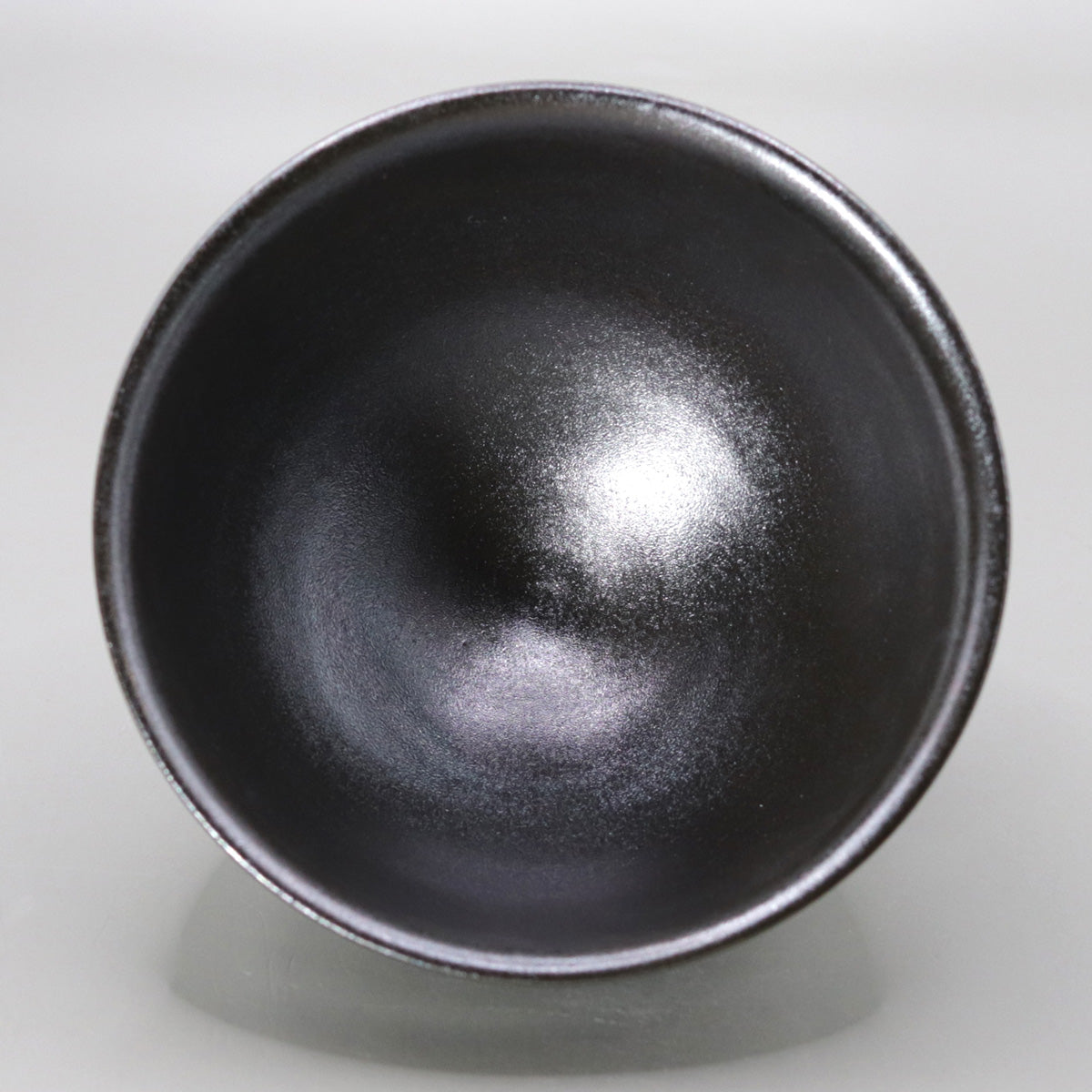


Multi-Column
-
[I will send it to you quickly and carefully]
We carefully package each product in a way that suits it best.
Also, delivery times vary depending on the piece (vessel, etc.).
Items that already come with a box will be shipped within 1-3 days of the order date.
For items that require a box to be made after your order, it will take approximately 30 days for production to be completed and then shipped.
In either case, once we have confirmed your order, we will contact you by email to inform you of the delivery date.
-
[Requests when purchasing pottery]
Even products that look the same may differ slightly in color, shape, size, etc.
The way the glaze is used, the power of the kiln, the firing method, the season, and the humidity also affect the appearance of the pottery.
Please understand the individuality of each piece of pottery and enjoy the unique warmth of handmade.

